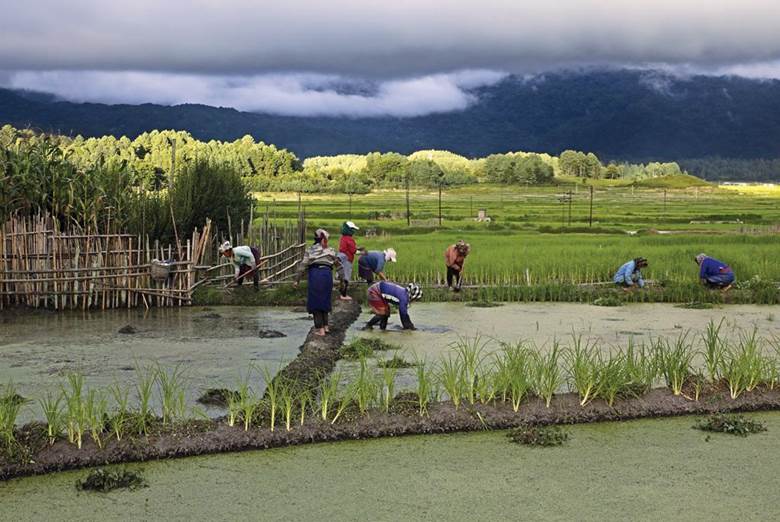Description

Disclaimer: Copyright infringement not intended.
Context: 28th July is World Nature Conservation Day. It is observed to increase awareness about the importance of preserving nature and natural resources in order to protect the Earth.
Details:
- The main aim behind observing the day is protect various natural resources such as water, air, soil, energy, vegetation, minerals and animal life.
- The theme of World Nature Conservation Day 2022 is “Forests and Livelihoods: Sustaining People and Planet”.
- The world’s indigenous peoples are the best custodians of natural resources, especially forests and wildlife.
- A 2019 report titled Forest and Trees: At the heart of land degradation neutralityreleased in 2019 by the United Nations Convention to Combat Desertification noted that indigenous communities were the custodians of around 40 per cent of protected and ecologically intact landscapes and managed nearly 300 billion tonnes of carbon on lands owned by them with almost negligible investment.
- In India too, indigenous peoples have proven to be the best stewards of nature.
Bishnois
- The Bishnois are the stuff of legend. People whose women suckle antelope fawns and who are willing to give up their lives for the Khejri tree.
- This sect was founded by Guru Jambheshwar around 550 years ago in western Rajasthan. He gave 29 principles for humans to follow and worship every form of nature.
- He preached that God is a divine power that is everywhere, in each element of biodiversity on earth. He also taught to protect plants and animals as they are important in order to peacefully co-exist with nature.
- Over the years, the followers of Guru Jambeshwar or Jambhoji came to be called Bishnoi, from Bish(20) and Noi (9), who follow all of his 29 principles.
- The Maharaja of Marwar, Abhai Singh, had sent his soldiers to cut down trees in the Khejarli village in Jodhpur district. The trees were needed for the construction of a new palace.
- But the residents of the village, led by a Bishnoi woman called Amrita Devi hugged the trees and refused to let the soldiers cut them. The angry soldiers massacred 363 villagers.
Khasis
- The Khasis of Meghalaya are famous across India for their matrilineal social structure.
- Khasi customary laws and practices allow for conservation of forests in the form of sacred groves
- These conservation practices were governed by the local village councils and had been a part of Khasi tradition since ancient times.
- Sacred groves were dotted across the Khasi hills in Meghalaya, with the most famous one at Mawphlang.

Van Gujjars
- The Van Gujjars are a semi-nomadic pastoral community, which continues to practice seasonal migration across forests in Uttarakhand, Uttar Pradesh and Himachal Pradesh in pursuit of their pastoral livelihood.
- They have been villanised by the forest departments of these states for their nomadism.
- Throughout the last decade, numerous attempts have been made by the forest department to restrict entry for the Van Gujjars on the pretext of their pastures being declared as protected area or on the ground of encroachment.
- The rotational grazing of the Van Gujjars and their buffaloes also help maintain water sources through embankments, removal of invasive species, facilitation in seed dispersal, remanuring the grazing areas and paths and creating fire lines within forests to protect the ecosystem for other species too.
- The phenomena of transhumance pursued by the community is among the few climate-adaptive and resilience strategies that ensures their pastoral livelihood remains viable and sustainable
Idu Mishmis
- The Idu Mishmis live mainly in the districts of Lower Dibang Valley and Dibang Valley of central Arunachal Pradesh.
- They believe that tigers are their elder brothers. Killing tigers is, for the Idu Mishmi, a taboo.
- In their worldview, the human and natural worlds overlap. There is a constant engagement with the environment through agriculture, hunting and harvesting of resources.
- They are animists and believe that animals and forests are not their but belong to the spirits.
Apatanis
- The Apatanis live in a small wooded valley surrounded by wooded hills in the Lower Subansiri district of Arunachal Pradesh.
- The art of rice cultivation has descended from one generation to another in Apatani tribes.
- The practice based on traditional wisdom which has sustained over generations, has made rice production economically viable, ecologically safe and often energy efficient.
https://www.downtoearth.org.in/news/forests/world-nature-conservation-day-these-5-communities-of-india-preserve-ecology-in-their-own-distinct-ways-84008
1.png)












